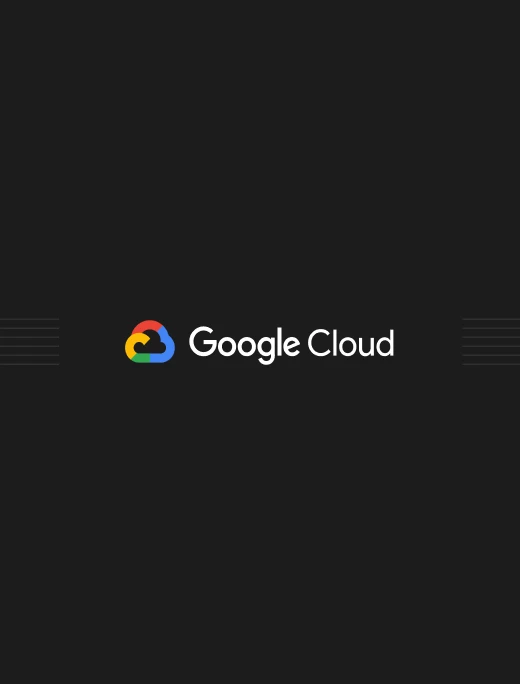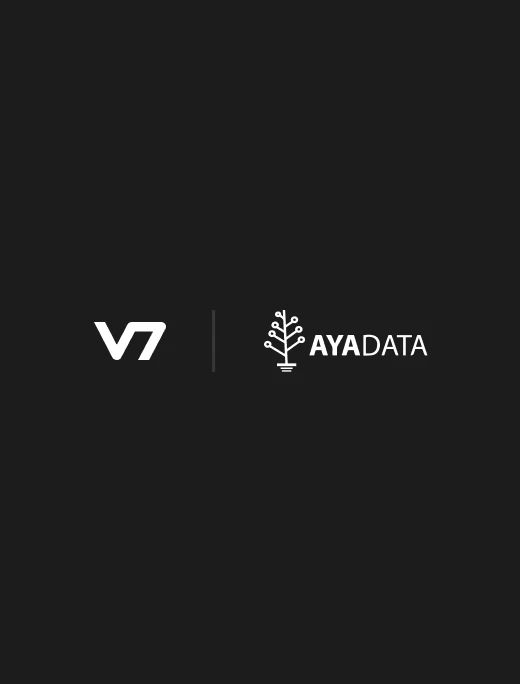Earlier this month, we released our new GenAI work automation platform, V7 Go. We dive into the product's history, and how it works.

Senior Content Marketing Manager at V7
On April 10th, we launched our biggest development in two years: V7 Go, the platform for multi-modal AI task automation. As the toggle triggered “live”, the next 24 hours would see V7 Go earn 1000+ team signups, 10K+ cumulative keynote views, and a flurry of reviews from Founders, AI engineers, as well as ICs building with AI for the first time.
In just two days, V7 Go had gathered thousands of signups, acquired paid users organically, and, had been showcased as one of Google’s top 100 GenAI products of Google Next 2024.
But we’re getting ahead of ourselves.
Let’s start from the beginning: what’s the story behind Go?
Want to skip ahead? Click below to jump to any section.
Why did we build V7 Go?
When Generative AI entered its hype cycle, our flagship product, V7 Darwin, had already spent half a decade as a key component of trustworthy AI creation, as a training data platform known for accelerating the pace and reliability of AI model generation.
And yet, many tasks we saw being labeled on V7 Darwin could be tackled with well-prompted foundation models, including most tasks involving text. Despite this, the hallucination of LLMs was a barrier to scaling GenAI use, clunky UI barred the masses from innovation, and multi-modal AI automation remained a task reserved for machine learning experts.
Research of our Darwin customer base, packed with market leading businesses including the likes of Boston Scientific, Merck, DB Cargo, and Roche, revealed 90% of V7 customers named Generative AI among their priorities for 2024.
And yet, just 23% of respondents were using it.
So, how could we make GenAI automation accessible to all, while resolving the reliability and scaling issues LLMs had become known for?
Multimodal foundation models are good enough to solve most of the tasks we complete at work today, but aren’t easy to run at scale with reliable results. We believe AI should free us from back-office and administrative tasks, to give us time to focus on our creative and interpersonal work.
About 40% of the work we’re doing on our laptops can be done just as well by frontier models when configured correctly with the right context, so we built a product that lets you intuitively configure AI models and run them at scale, on any task involving documents, video, or text.
At a snapshot, V7 Go can…
Extract information from large, complex documents.
Qualify and categorize inbound messages, such as contact forms, and perform actions via Zapier.
Classify text, emails, or images in the order of millions.
Compare the performance of different LLMs across the same task.
As an AI-powered database, V7 Go can be used to solve almost anything. On launch, we’ve focused a lot of its optimizations on document processing, form understanding, and data extraction, as tasks that are done in massive quantities, but that nobody necessarily likes doing.
Where did the idea for V7 Go come from?
The idea for V7 Go came to us when working with a client that analyzes 300,000 scanned pages of paper per day (!) taking up thousands of human hours in the process. We needed a way to use LLMs like GPT-4 reliably enough to outperform expert human analysts, but also in a way that scaled past the 1:1 chat UI.
So, we developed V7 Go, to resemble a smart spreadsheet where every cell hosts an LLM.
There is a workflow challenge in generative AI, where its ability to succeed relies on being able to source similar examples of a task, and understand a company’s context, so it can be more accurate and well-tuned than baseline GPT-4, Claude 3, or Gemini.
V7 Go abstracts away a lot of configuration burdens on the user, but has a lot going on under the hood, while being built to integrate with your (internal or external) product via the API.
V7 Go: How it works
Production for Go began in November, after an extensive prototyping process that leveraged foundation models to learn repetitive tasks, automate them, and do so reliably. By April, Go was ready to… well... Go, with a complete user interface that made GenAI automation accessible.
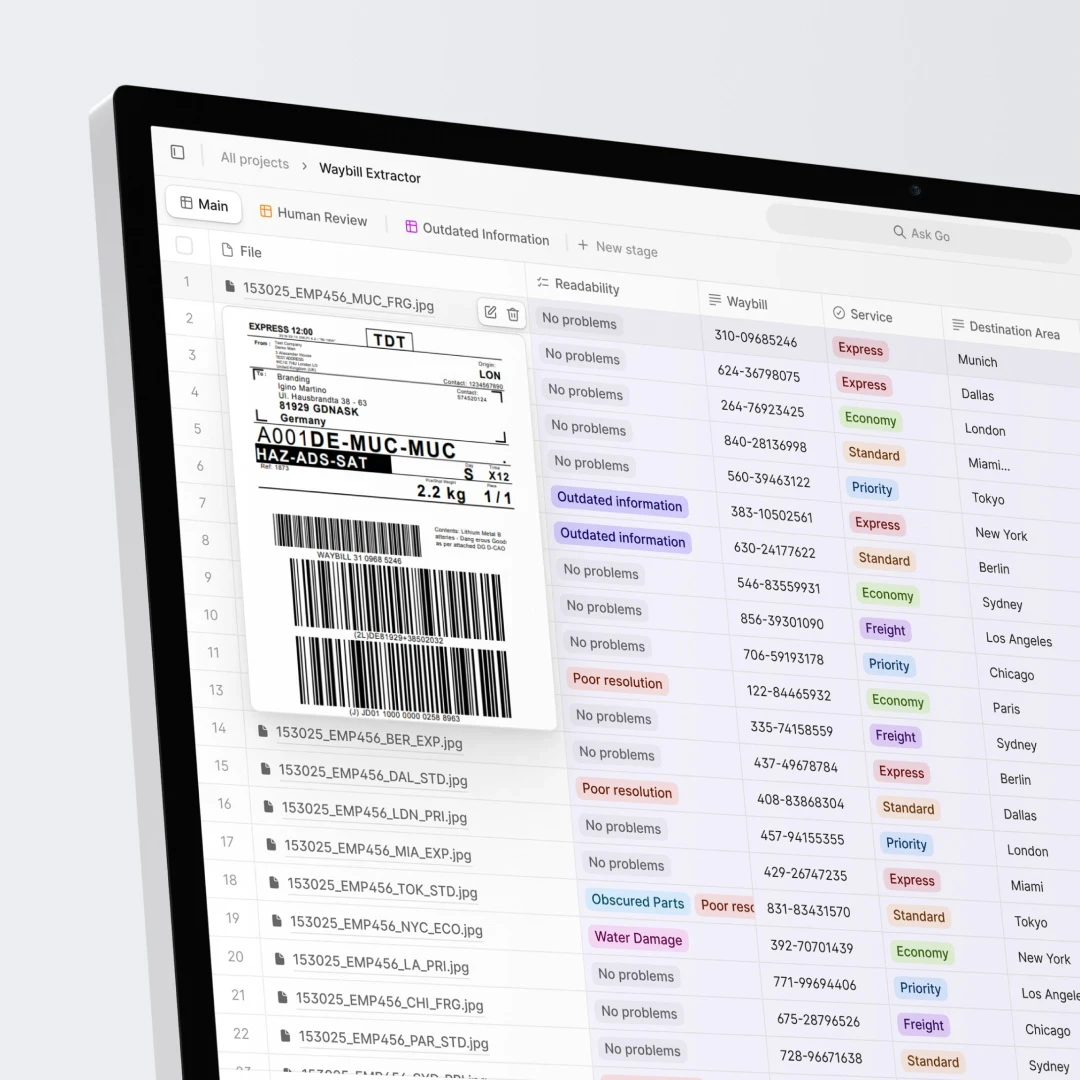
We built Go with a particular set of foundations that powered its ability to automate thousands of use cases and on the 10th, released it to the masses.
So, what’s under the hood of V7 Go?
Chain of Thought Reasoning
Go breaks down complex tasks into reasoning steps, column by column, allowing AI to reflect on parts of a problem, rather than the whole, resulting in fewer errors, and more scalable operations.
Known as Chain of Thought Reasoning, this is the baseline of V7 Go’s automations.
Index knowledge
With Go, documents are turned into databases for AI to reason with, allowing the AI to write its own code to query vast amounts of information. This is powerful data engineering that doesn’t require configuration from the user.
We call this Index Knowledge, and, it allows models to develop a data extraction plan, much like a human analyst would.
Task automation workflows
With customizable workflows, Go users can power models like GPT-4, Claude 3, or Gemini to perform data pre-processing, branching off into AI-powered assembly lines for edge cases like tasks that require human review. You can even chain models together, allowing users to solve multiple complex tasks in the same project.
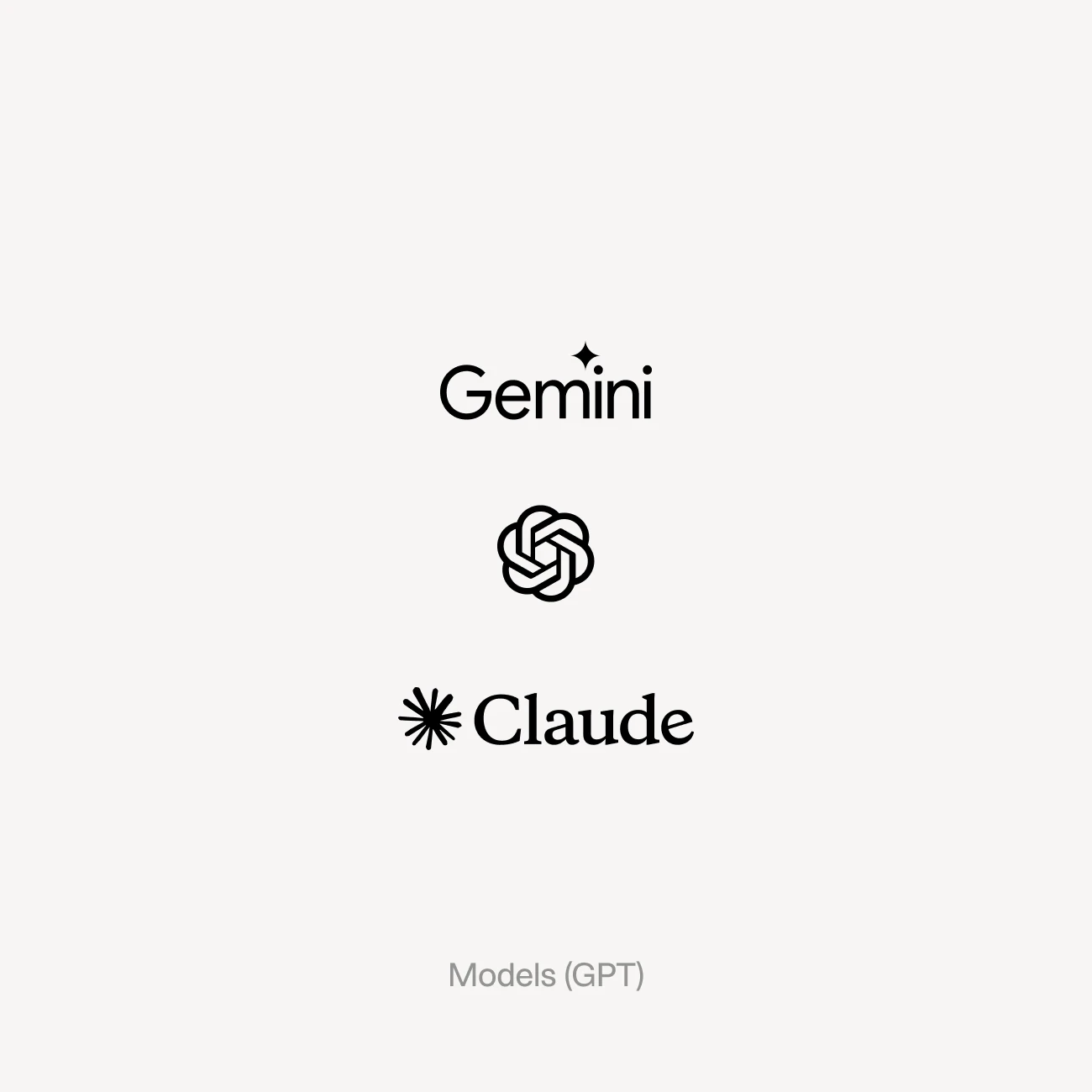
Scalability
We’ve launched with the capacity of 10 million fields per project, making Go the most scalable GenAI workflow automation tool on the market.
And, this is just the start: we’re moving towards a future supporting hundreds of millions of automations a month.
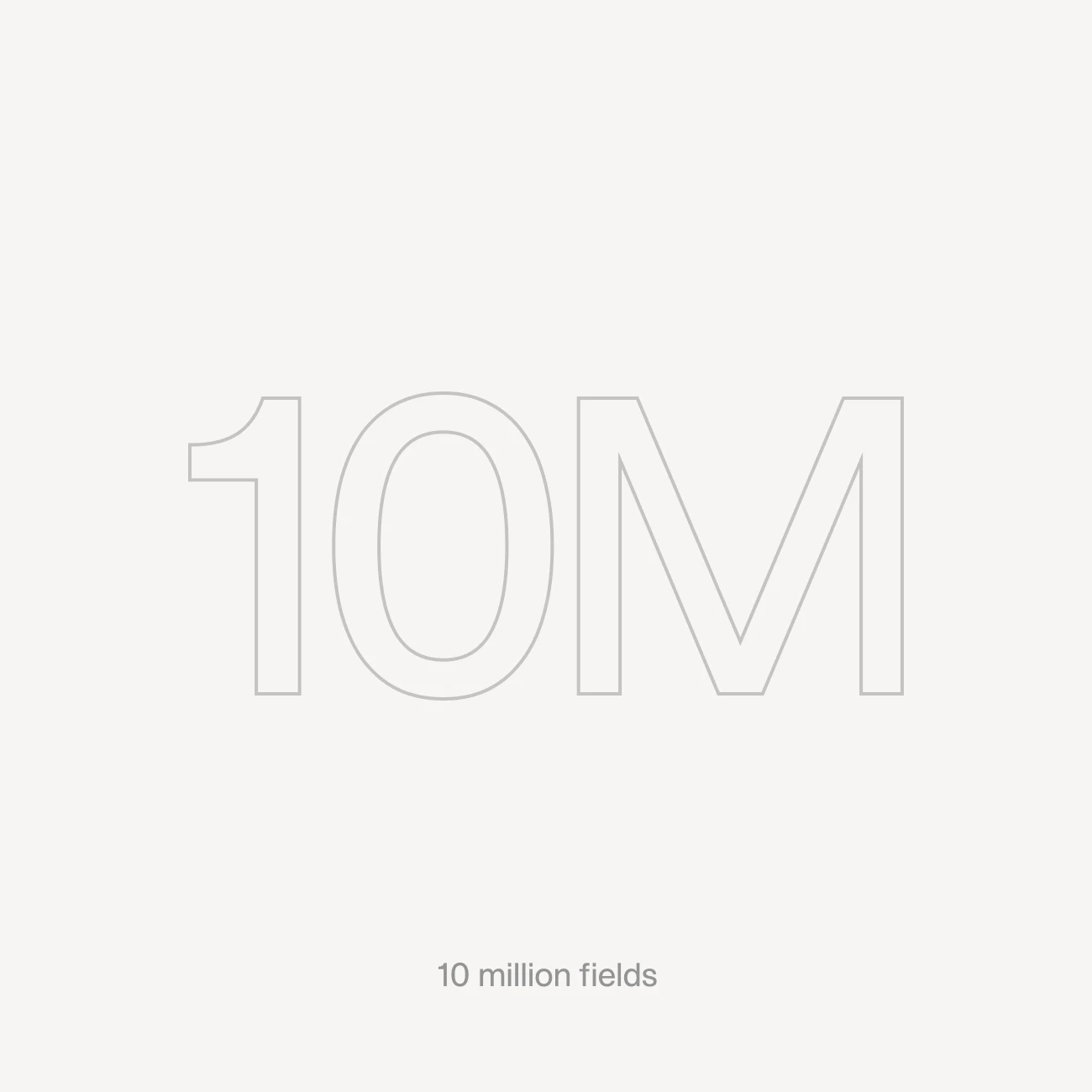
Security
V7 is SOC2 Type 2 compliant, SSO enabled, and for enterprise clients, can run entirely on-prem via the Google Cloud marketplace. Thanks to our collaboration with OpenAI and Google, your data remains private, and exclusively yours to use.
Visual Grounding
On top of Index Knowledge, V7 Go users will soon be able to verify the location in a document or image where an LLM has sourced its information to exert a decision, increasing its explainability. This feature, coming soon to V7 Go, is called Visual Grounding.
For example, in an invoice processing use case with GPT-4, V7 Go exposes the model’s source of information visually, highlighting the specific text in color to speed up human reviews of AI-completed tasks.
Built to integrate
V7 Go includes a powerful API and JSON outputs, meaning it seamlessly integrates with your existing tools and frameworks. You can also build and augment your apps, with the V7 Go API.
Want to connect Go to your favorite apps? Try integrating with Zapier now, to start automating work, and securing more time for what matters most.
AI select properties
We’ve put an end to essay-long answers, with multi and single-select properties that give users greater control over how their projects consume or generate data. This spans from File and Text types, right through to Select, JSON, and Collection. The result: considered model outputs that can power products as a back-end, and connect to external apps, via Zapier.
So, what was the response?
V7 Go reception
V7 Go launched with a detailed keynote that revealed where Go came from, how Go worked, and where Go was… (you guessed it) going.
And the reviews began trickling in…
“Mind-blowing. I absolutely love this! The interface is intuitive and a pleasure to navigate, showcasing great UX!”
“Very impressive. Love the ambition to see the opportunity, leverage their great team, and step out of their niche”.
“I watched the full launch keynote video yesterday and was astonished at this platform. It's a phenomenal application of AI for enterprise automation. The interface looks super easy to use and understand. The sheer capabilities and number of use cases are wild...Just consider how much brute force, and repetitive work this is automating in each of the demo examples... taking hundreds of documents and parsing the data would take weeks but reviewing the output might take a couple days. For the time and manpower saved, it's given at a steal in my opinion.”
Alongside the positive reviews, came constructive comments, allowing us to build a bank of improvements for the months to come. Thanks to initial feedback from the growing V7 Go community, we now have a number of improvements in the pipeline for our users.
V7 Go is also coming to Google Cloud Marketplace, making GenAI automation even more accessible than before,
"We are thrilled that V7 have chosen to include their latest Gen AI solution on the Google Cloud Marketplace - enabling our customers to automate their multimodal AI tasks at scale with Gemini. With many joint customers already, we are excited to continue fuelling V7’s growth with another channel.” - Karen Zhang, Fintech and VC Partnerships Lead at Google.
How can I get started with V7 Go?
If you're working with documents in finance, insurance, or legal (think investment memo generation, virtual data room KPI extraction, claims processing, or contract reviews) V7 Go might be the right fit.
You can book a live demo, and if your use case looks like a good match, we’ll build a custom proof of concept using your sample data, free of charge. It only takes a few days, and it’s the fastest way to see V7 Go in action on your workflows.
Curious to see what Go can do?


